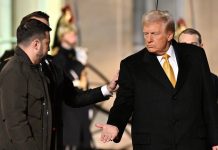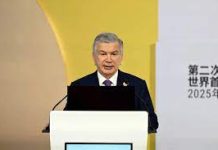While many policy analysts in the West might feel compelled to consider Central Asia’s geostrategic importance in light of the nearly two-year conflict in Ukraine between Russia and the West, the region was destined to gain attention and importance due to a number of factors that have become clear over the past year.
The first factor is the continued emergence of a multipolar world in which new powers assert their national interests and extend their diplomatic influence to neighboring countries and regions; either alongside or, if necessary, in competition with the United States’ longtime global position. For both Kazakhstan in particular and Central Asia in general, Washington never really gave the region the attention afforded to Europe, the Middle East, or East Asia. As a result, Kazakhstan has remained largely within Russia’s foreign policy orbit. But despite continued cooperation between Moscow and Astana, China has become a larger trading partner in recent years, and has been a major sponsor in several large infrastructural projects connected with the Belt and Road Initiative. This includes work on modernizing Kazakhstan’s road and rail network, energy production, and raw material extraction, all of which will transform the country into a central hub of transit and communication in an integrated Eurasian region.
The United States and the European Union have been frequently described as latecomers to the region in comparison with Russia and China. However, Italy is Kazakhstan’s largest exporter, accounting for more than 16% of its overall exports. Trade ties with the larger European Union have accelerated in recent years, and as a collective bloc, the EU is Kazakhstan’s largest trade and investment partner. Particularly noteworthy was the visit of French President Emmanuel Macron to Kazakhstan and Uzbekistan this past November as part of a larger initiative in securing contracts in oil, gas, and uranium exports in light of the limited resources due to EU sanctions on Russia following the conflict in Ukraine. These aren’t new endeavors, as the EU has enjoyed longstanding ties with Astana for years.
The second factor pointing to Kazakhstan’s regional importance is its strategic multi-vector foreign policy, which is due in no small measure to its multifaceted economic relations. This policy signifies that Astana is continuing to build ties and enhance cooperation with all sides, including with its neighbors China and Russia, as well as with the European Union and the United States.
Kazakhstan has not supported Russia’s involvement in Ukraine and has not recognized any of the territories Russia has annexed. At the same time, Kazakhstan remains a member of the Commonwealth of Independent States (CIS), the Eurasian Economic Union (EAEU), the Shanghai Cooperation Organization (SCO), and has applied for membership in BRICS, which is scheduled to add at least five new member states to its association on January 1, 2024. Ultimately, Kazakhstan has continued its cooperation with Russia, particularly in the economic and trade sphere while at the same time enhancing its relations with China and the West. Russia has never objected to Kazakhstan pursuing policies, whether economic, political, or diplomatic, that align with its national interests. Kazakhstan’s longstanding ties with Russia, a significant ethnic Russian population, and a multilayered partnership across various regional organizations ensure that Russia remains a prime economic partner for Kazakhstan. At the same time, over the past year, Kazakhstan has significantly increased its cooperation with Europe and the United States, exemplified by many visits by Western officials to the Central Asian nation.
Another factor underscoring Kazakhstan’s growing regional importance over the past year is its successful effort to dispel the long-held stereotype of being merely ‘Russia’s backyard’ — a term historically used to describe Central Asia as the southern peripheral territories of the Russian Empire and Soviet Union. This term, often employed in the 1990s and 2000s, broadly painted the region as nothing more than a collection of autocratic regimes led by unchallengeable presidents-for-life. However, this characterization has become outdated, especially considering the recent political reforms in Kazakhstan aimed at further democratization.
The rising interest of the United States and the European Union in Central Asia is often optimistically interpreted, with every new economic deal, academic partnership, and establishment of English-language schools seen as a step towards reducing the region’s dependence on Russia. However, Kazakhstan is demonstrating trends of modernization, development, and increased accessibility that depict it as an independent decision-maker, not merely as an actor within Russia’s sphere of influence.
Kazakh President Kassym-Jomart Tokayev, adhering to a ‘multivector foreign policy’, does not perceive increased partnerships with the West as coming at the expense of relations with Russia or China. This approach illustrates Kazakhstan’s nuanced and balanced diplomatic strategy, aimed at maintaining strong ties with all major powers while asserting its own national interests and identity.
With this backdrop, Kazakhstan concludes 2023 with a strong record of growing national confidence in its strategy of a multivector foreign policy. This approach is expected to continue yielding positive results in 2024, as the increasing multipolarity of global politics places the country and the wider Central Asian region in the spotlight of international economic and political importance.
The author is Michael Rossi, a University Lecturer in the Department of Political Science at Rutgers University, USA. He has spent the past two years as a Visiting Professor in the Department of International Relations at Webster University in Tashkent, Uzbekistan. Recently, he served as a Visiting Professor in the Department of Political Science at Fordham University, USA.






